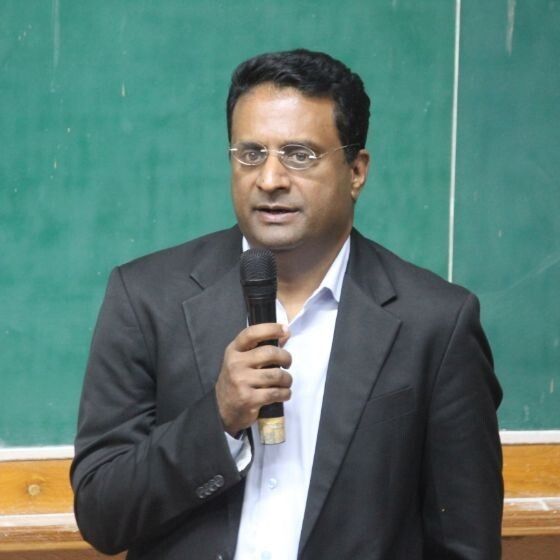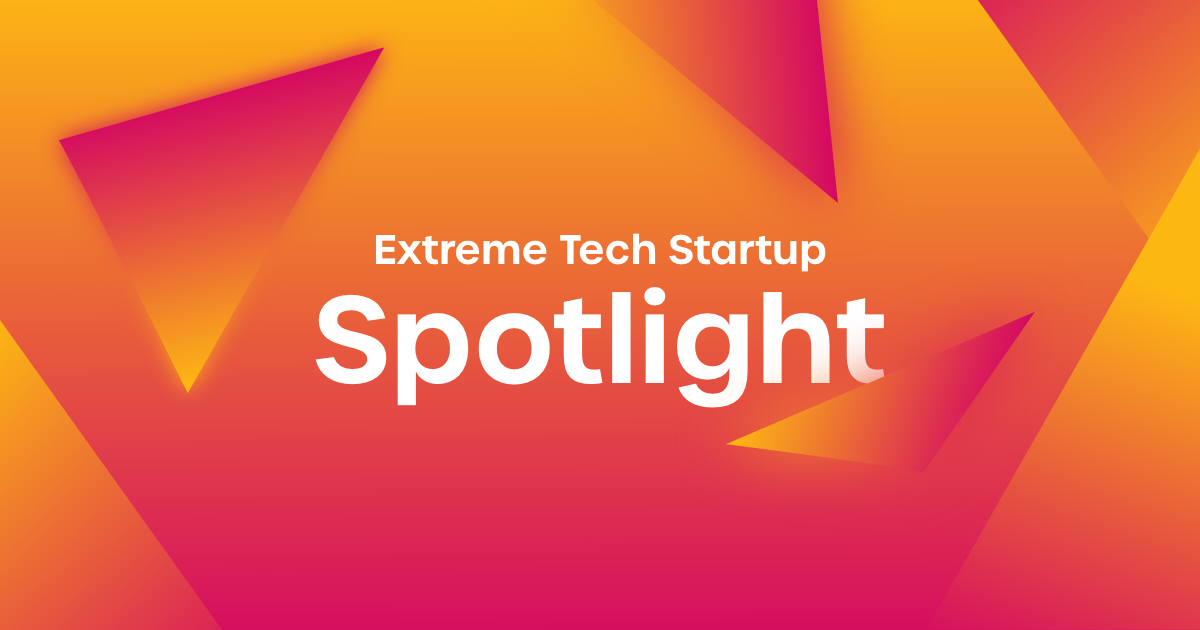Extreme Tech Startup Spotlight: Stellapps – Extreme Tech Challenge
[ad_1]
This week in our Startup Spotlight blog series is our 2023 Winner, Better Life Category, UN World Food Forum Startup Innovation Awards by XTC –Stellapps!

Interviewed and Edited by John Martin
Six Questions for Ranjith Mukundan – CEO and Co-Founder of Stellapps

Ranjith Mukundan received a Bachelor of Engineering with distinction from the Bangalore Institute of Technology, followed by a Master’s in Telecom and Software Engineering from the Illinois Institute of Technology. He spent 15 years in the communications technology space with Wipro Technologies, working with Bell Northern Labs, Nortel and advancing as Program Manager, Chief Architect, Head of Technology Labs and Global Head of Wipro’s Internet Media Service and Telco Apps practice. That broad 360-degree view of cloud business services led him to co-found Stellapps as an IoT solutions integrator in 2011, which he has been cultivating and growing ever since. Ranjith led the company in acquiring a total of $37M in funding, capped with an $18M Series C in 2021.
1. What problem is Stellapps solving and how?
So much of food production in developing nations remains an informal, inefficient sector constrained to mere subsistence by 19th century-style hurdles from low productivity, lack of quality inputs and scarce veterinary services to limited credit access. Stellapps is leapfrogging those and even basic 20th century “first world” operations to offer cutting-edge IoT-Cloud-AI services to farmers with our go-to-market focus on dairy. Our approach fosters a culture of data-led decision-making, which is not only revolutionizing farm management practices but also making dairy farming a socially profitable and environmentally sustainable endeavor.
2. What is your background that led YOU to founding Stellapps?
I had spent over a decade in telecoms and IT and what would now be called “cloud services.” We founded Stellapps in 2011 as a broad Internet-of-Things developer and integrator for everything from hospitals to warehouses to logistics. That turned out to be too broad and diffuse for the unit economics to succeed as a startup. At that moment, a friend’s uncle was starting an organic dairy farm near us in Bangalore and asked if we could help with remote monitoring. It was easy for us to engage; from an IoT perspective, a cow and a truck are the same, you just need to adjust the parameters. Once we got into it, we saw there was so much “downstream” potential that we had dropped all other Stellapps verticals for a deep dive into the dairy business. Our initial concept involved creating wearable devices for livestock and automating milking processes to increase hygiene and efficiency on farms. This led downstream to dairy operators and the means to enhance productivity, quality and traceability. Eventually spanning the entire supply chain helped us establish a robust system ensuring the integrity and freshness of dairy products.
3. What is unique about Stellapps’ technology and what is its validation status?
The cornerstone of Stellapps’ approach is empowering farmers with actionable insights to enhance productivity, quality and traceability. Our farm operations applications equip farmers with digital tools that foster efficient herd management and informed decision-making, track health and reproductive information, maintain profit/loss records and receive reminders for vaccinations and restocking.
Our supply chain services provide high-quality agro-inputs and farm equipment, conveniently delivered to the farmers, ensuring their access to the necessary resources for improved cattle health and enhanced milk quality. Our grading and pricing applications ensure fair payment for milk based on quality parameters, and our online transactions service bypasses inefficient and costly middlemen, providing farmers direct buyer access on better terms.
We also have a fintech angle. mooPay™ creates financial inclusion for smallholder farmers, many of whom have never availed themselves of loans from formal financial institutions. This is expedited by mooScore™, an alternative creditworthiness score catalyzing farmers’ access to credit products tailored to their needs.
4. What are your Go-To-Market ideas and traction received so far?
Interestingly, we initially envisioned a simple SaaS/licensing model to existing operators, upon which to build a broader ecosystem of services. We quickly realized we were best served by becoming a dairy ourselves to really deeply prototype and understand a fundamentally new form of Indian dairy. So, we established our own supply chain, embracing a vertically integrated model with technology as the driving force to discern the value-added services most beneficial for farmers. Recognizing the financial constraints farmers faced, we introduced the fintech side, recruiting a seasoned banker to navigate the nuances, allowing us to assess creditworthiness through alternative metrics, such as cash flow and responsible farming practices.
We then found there was little modern supply chain to plug into, so we built our own, offering the full gamut accessible through hyper-local stores established within village centers. This eliminated the need for farmers to travel long distances to major market centers. In addition, we developed a digital hub app for farmers, featuring a milk passbook, educational resources and a retail storefront for agricultural necessities.
Our fintech apps now service nearly 70,000 farmers to more than 1,600 villages and disperse the equivalent of nearly half a million dollars in loans every month. Our apps are deployed in over 44,000 villages in India. We have capacity to procure 350K liters of milk per day across 1,600 villages in India. We are engaged with major dairy goods providers such as Hatsun, Lactalis and Heritage and consumer packaged goods brands such as ITC, Unilever and Paperboat. And most recently, we’ve expanded into a B2B2C model, partnering with well-known retail brands for distribution. Our run rate has grown to nearly $80M for 2022, resulting in attractive investments from major VCs, Qualcomm, the Gates Foundation and the Netherlands sovereign fund IDH, the latter two marking their first equity investments in India. That in turn has drawn positive attention to our impactful approach to digitizing the dairy supply chain, which was previously seen as capital-intensive and somewhat static.
5. What’s next?
Global expansion and an IPO are our major objectives within the next three years. We recognize the IPO journey is demanding, so we’re laying out milestones to ensure we’re ready. Our current focus is on scaling our digital processing capacity from 250K liters of milk per day to a staggering 5 million liters over five years. By the time we approach our IPO, we aim for a daily processing capacity of 1.5 million liters.
While we work toward going public, we are also pursuing international opportunities. Discussions are under way with a prospective client in China for the supply of A2 powder milk, and we’re exploring partnerships in the Gulf, including Oman and Abu Dhabi, and with retailers in Southeast Asia for potential private label collaborations.
But our vision extends beyond milk. We aim to leverage our platform and existing network of farmers and consumers to branch into other food products, including sweetcorn, seedless watermelon and spices. With an existing portfolio of dairy products, we’re planning to introduce new offerings such as whey powder, various types of paneer (cheese), ice cream and more.
Ultimately, our mission is to ensure a transparent connection between consumers and producers, guaranteeing purity and quality while enhancing the financial well-being of farmers. Having impacted nearly 45,000 villages, we’re now gearing up to expand our reach across all of India.
6. Tell us about your experience with XTC and what were the benefits/takeaways?
As I noted, recognition of our success has been ever expanding through VCs, foundations and sovereign funds. To appear and be recognized at the United Nations FAO World Food Forum was another great step-up that was only possible with the platform and top-shelf connections of XTC. We are very grateful to XTC for providing us with the opportunity for this global exposure. And from beginning to end, the entire procedure went extremely smoothly. It is admirable how involved each member has been.
[ad_2]


